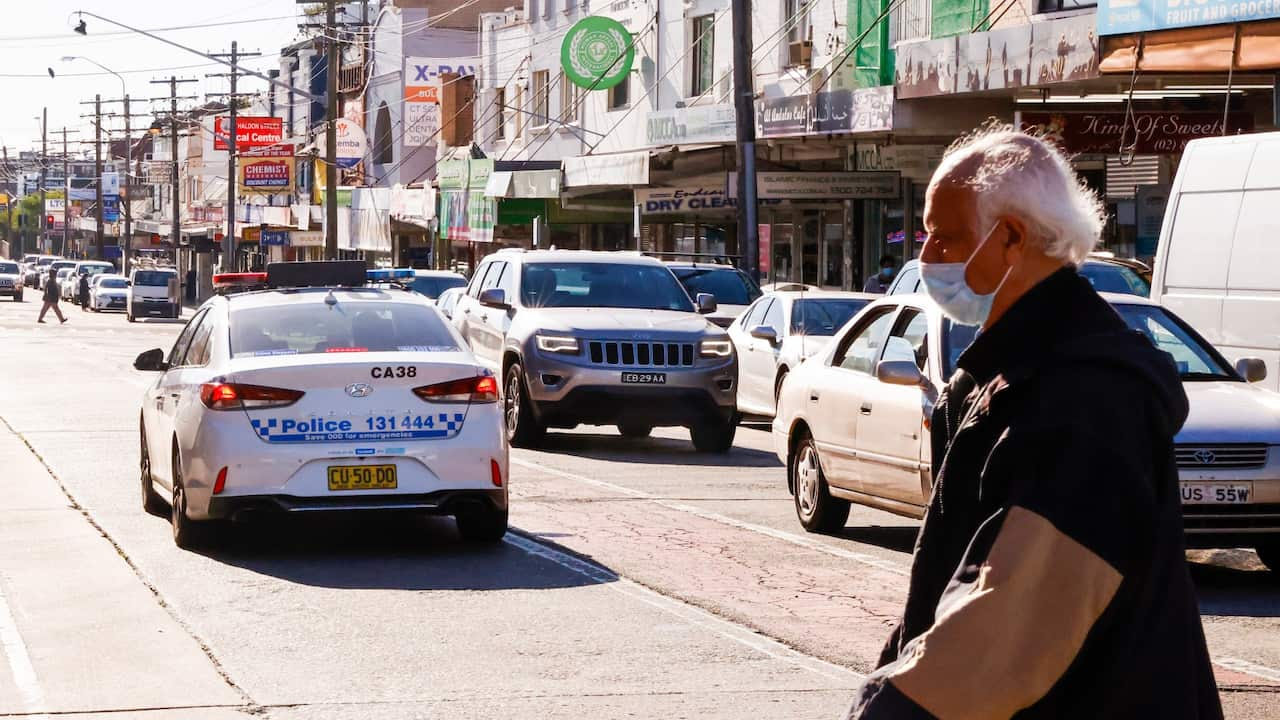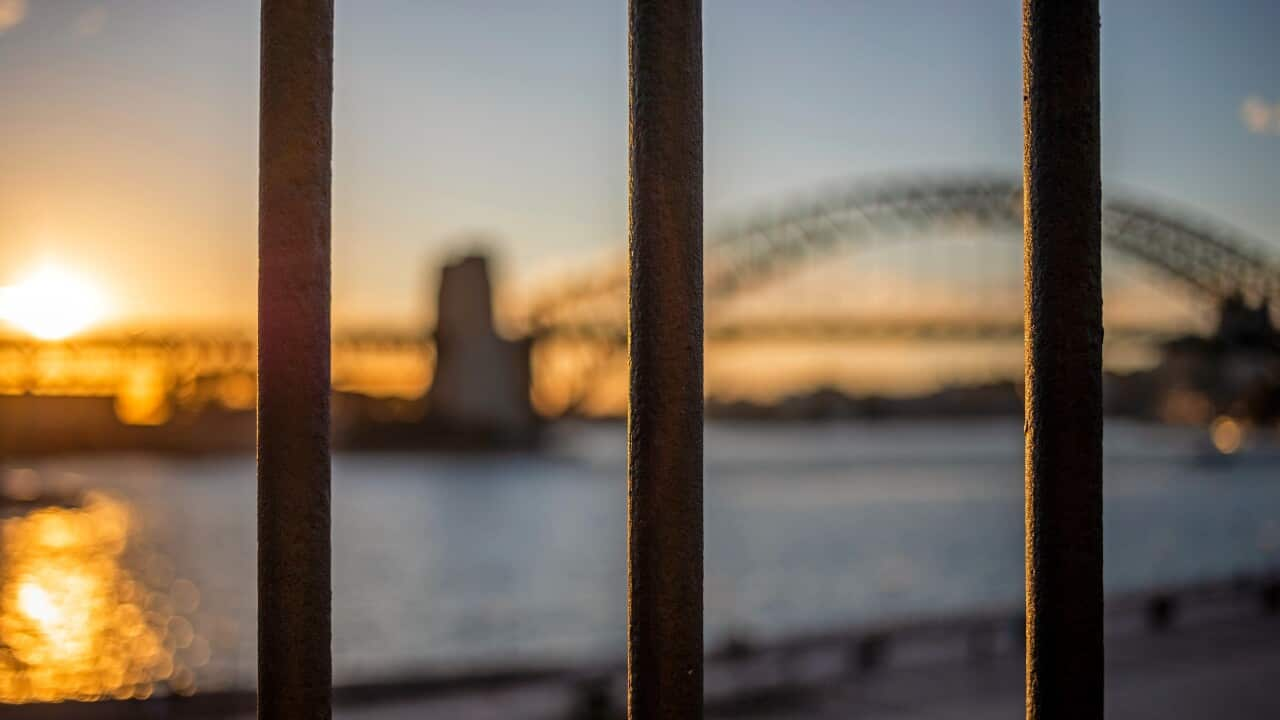Highlights
- Anyone with a working visa can apply for the COVID-19 Disaster Payment.
- The COVID-19 Disaster Payment is a one-off cash payment for each week of lockdown.
- Eligible applicants can receive between $450 and 750 per week.
*Adriano, a 29-year-old apprentice plumber living in Blacktown, one of the eight Greater Sydney local government areas under tighter lockdown restrictions, has lost all his working hours since the lockdown started at the end of June.
"I used to work over 40 hours per week, but now I can't work at all," he told SBS Italian.
Adriano moved to Australia from Italy nine years ago. He has been on Working Holiday visas and now he holds a Student Visa.
He is very thankful he can access the COVID-19 Disaster payment.
"It's a great act of humanity on behalf of the federal government," he said.
Previously, Adriano — like all temporary residents — had not been eligible for any subsidy from the government.
"When I lost all my working hours due to the lockdown, I had to leave the place I was renting through an agent and I had to find some temporary accommodation.
"Some friends of mine who own a shop in an industrial area in Blacktown said I could live there for a while, so I'm living in the shop and I pay them cash," he said. is a one-off cash payment for each week of lockdown and so far it has been made available to people in New South Wales, Victoria and South Australia. Support will shortly be announced for Queenslanders affected by the COVID-19 hotspots and restrictions.
is a one-off cash payment for each week of lockdown and so far it has been made available to people in New South Wales, Victoria and South Australia. Support will shortly be announced for Queenslanders affected by the COVID-19 hotspots and restrictions.

Adriano's friends had to close their shop and asked him if he wanted to live there temporarily. In the picture: A generic sign of a shop closed. Source: Anna Shvets/Pexels
People who've lost between eight and 20 hours of work can receive $450 per week. Those who have lost 20 hours or more of work can receive $750.
The COVID-19 Disaster Payment is the first formal subsidy that includes also temporary residents with permission to work — such as sponsored workers, international students, working holiday visa holders, explains Emanuela Canini, Managing Director and Immigration Consultant at Migration World.
"There were other small subsidies last year, however, these were a few initiatives sparked by single States and universities and were only helping a very limited number of temporary migrants in financial hardship," said Ms Canini.
Before the Sydney lockdown started, Adriano was $5,000 in debt after applying for an extension to his Student Visa. Now he doesn't know how he will pay it off.
"I'm drowning in bills," he said.
But receiving the COVID-19 Disaster Payment means he has enough money for food and rent.
"It was time the government helped temporary residents, who contribute greatly to the Australian economy", he said. The payment is only accessible if you are locked down for more than seven days in an area that is defined as a COVID-19 hotspot by the Commonwealth, explains Alessia Comandini, Solicitor at Comandini Migration Services.
The payment is only accessible if you are locked down for more than seven days in an area that is defined as a COVID-19 hotspot by the Commonwealth, explains Alessia Comandini, Solicitor at Comandini Migration Services.

Eight local government areas in western Sydney are under tighter lockdown due to a high number of cases. In the photo: Haldon Street in Lakemba on 22/7/2021. Source: Jenny Evans/Getty Images
"The grant guidelines, and the 2021 amending regulations, have specified that citizens, permanent residents, and holders of temporary visas who have the right to work in Australia could be eligible for the payment.
"This is unusual in the context of social security and disaster payments which generally excludes temporary visa holders," she says.
Even people on a Bridging Visa with full work rights can apply for this payment, Ms Comandini explained.
According to *Luca, a 23-year old Italian living in Drummoyne, an inner-west Sydney suburb, this payment means that he doesn't have to choose between buying food or paying the rent for his shared accommodation.
Luca works as a chef for a restaurant in Sydney, and he is on a Student Visa. He says before the lockdown started he used to work at least 40 hours per week, but now he's only working 20-25 hours.
He says before the lockdown started he used to work at least 40 hours per week, but now he's only working 20-25 hours.

Source: Photo by Clem Onojeghuo from Pexels
"On top of the money I still earn, the subsidy means that I can buy food and keep paying the rent. I don't know how I would manage otherwise," he said.
Before the payment was raised at the end of July from $600 to $750 for those who lost between 20 and 40 hours per week, Luca said the payment was not enough for people who lost all their working hours.
But now, he says it's a great help from the government — and definitely enough to get through these difficult times.
The federal government introduced the payment, then called the "COVIID-19 Pandemic Disaster payment" on June 3, a week into the COVID-19 lockdown in Victoria. A number of Australian Government COVID-19 measures providing income support ended in March 2021, including the and social security measures such as the Coronavirus Supplement and expanded eligibility criteria for JobSeeker Payment and Youth Allowance.
A number of Australian Government COVID-19 measures providing income support ended in March 2021, including the and social security measures such as the Coronavirus Supplement and expanded eligibility criteria for JobSeeker Payment and Youth Allowance.

Peopler queue to enter Centrelink on March 24, 2020 in Melbourne, Australia. Source: Quinn Rooney/Getty Images
Temporary residents did not have access to those.
People with a working visa are also eligible for another subsidy — the Pandemic Leave Disaster Payment, explains Ms Comandini.
The is a payment for those who can't earn an income because you must self-isolate or quarantine, or are caring for someone with COVID-19.
In May this year, for student visa holders
*This person's name has been changed to protect his identity.



